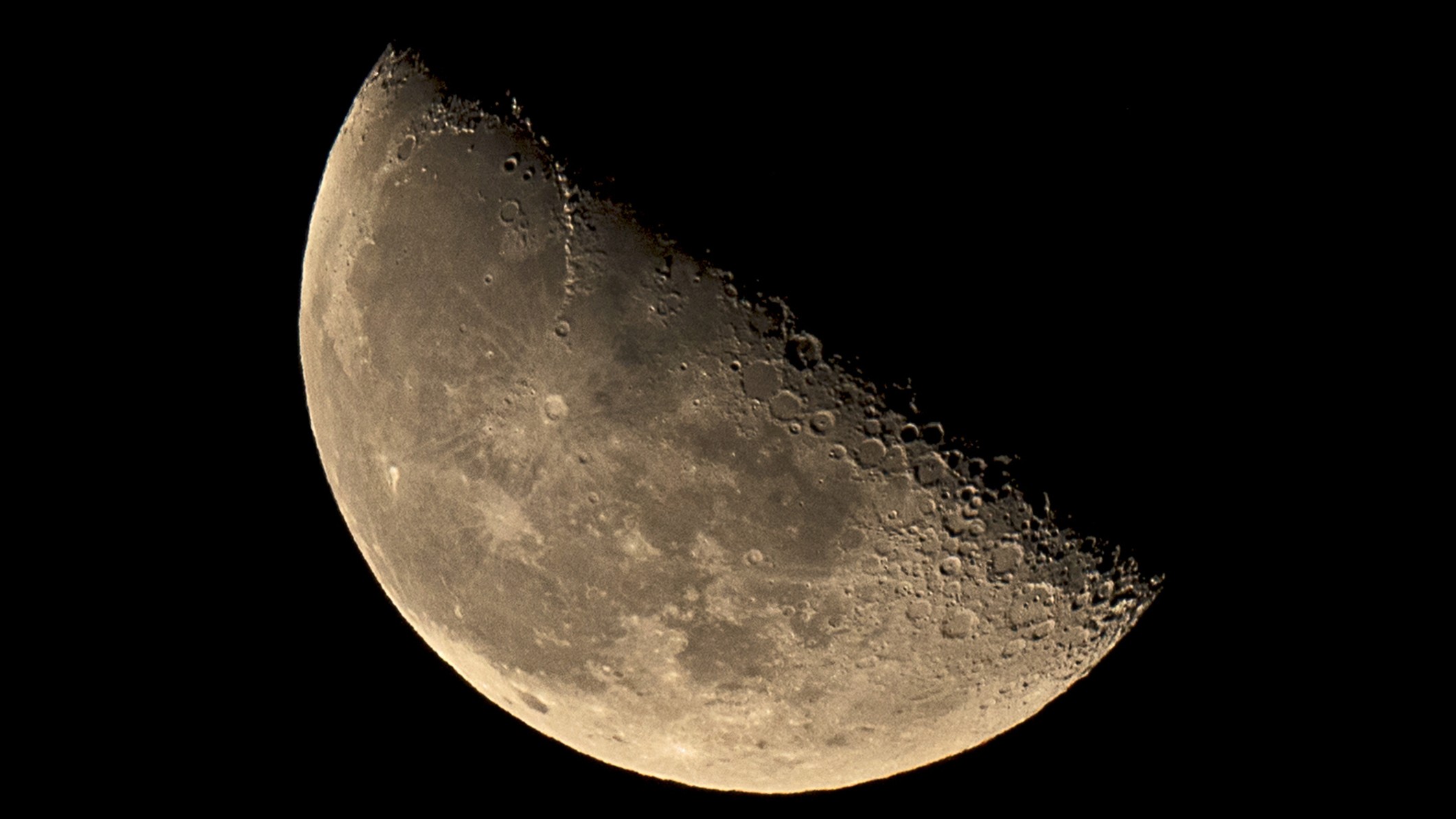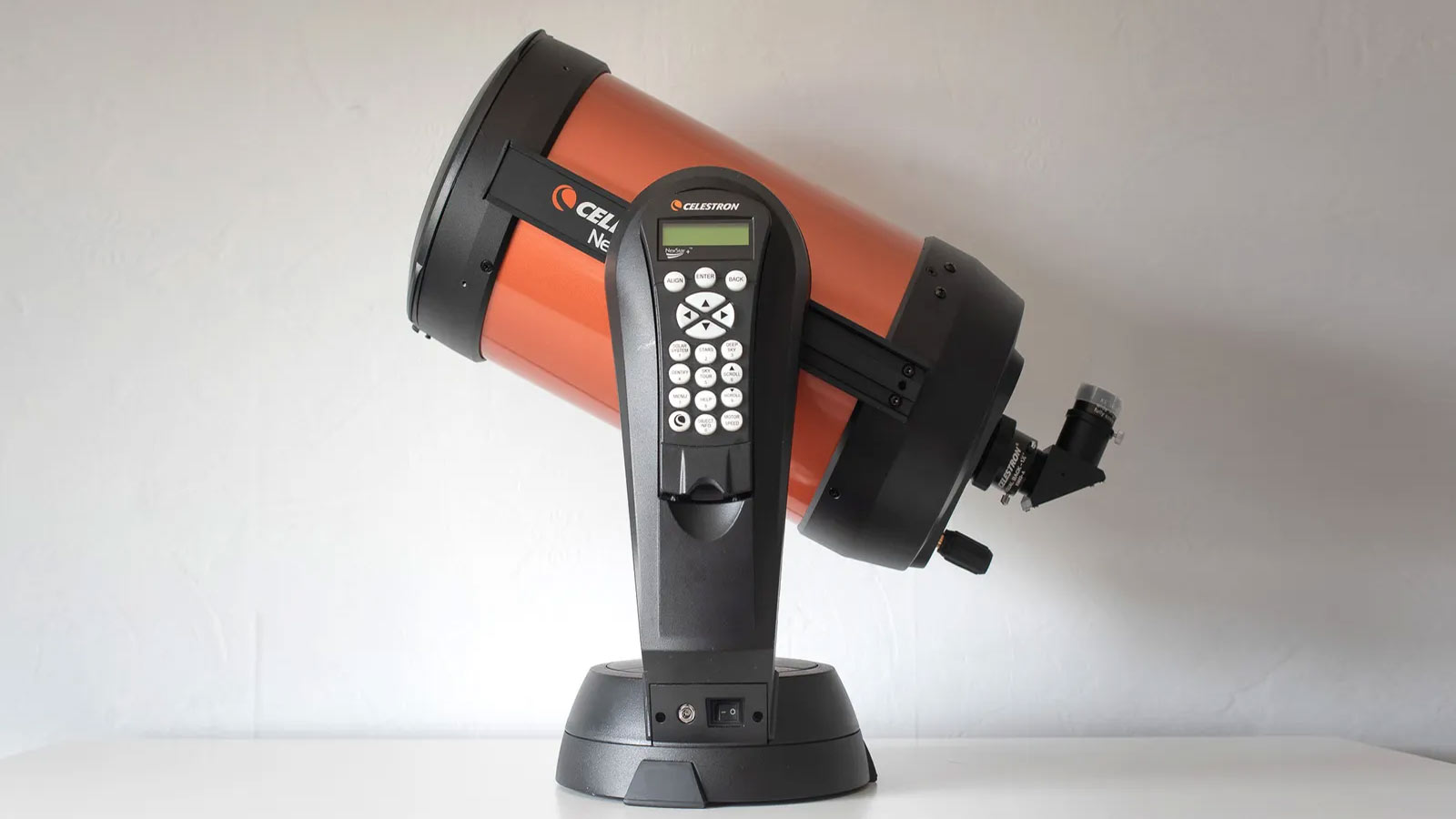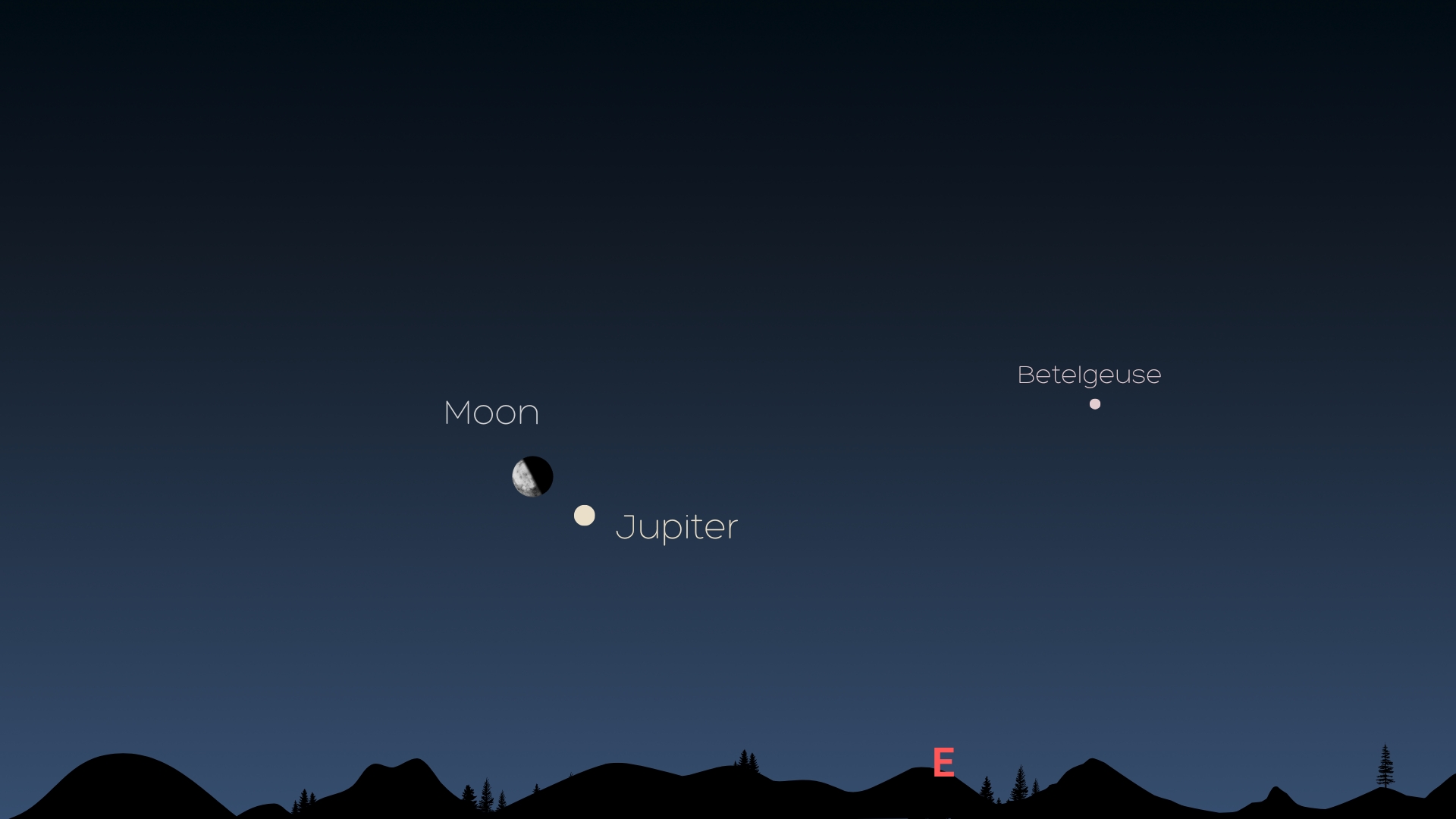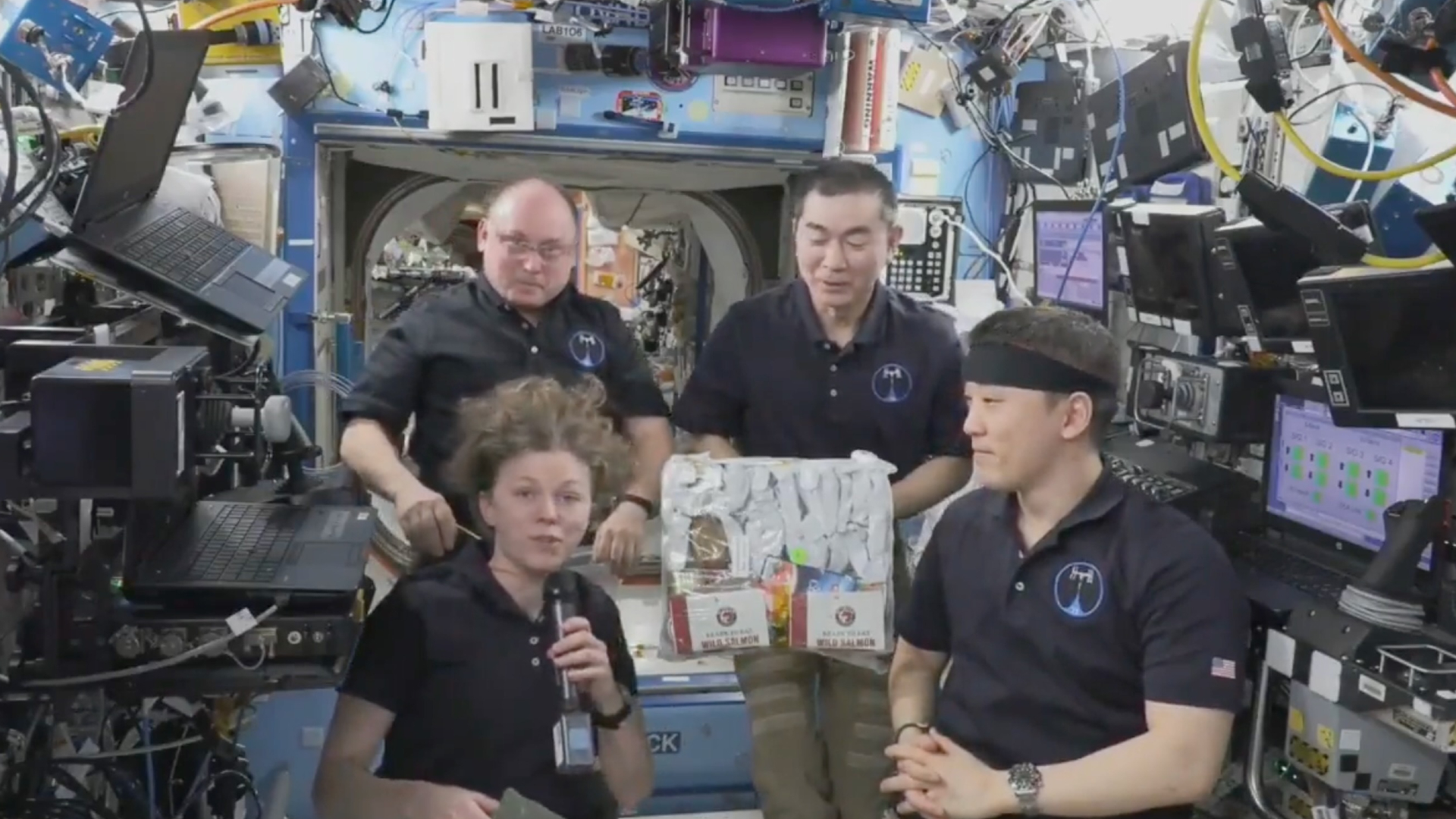The moon cozies up to Jupiter tonight. Here's how to see it
Two bright wanderers share the autumn sky as Jupiter rises beside the half moon.

If you're up late on Monday night (Oct. 13), or awake in the predawn hours of Tuesday (Oct. 14), look east for a striking sight.
The moon, just hours past its last quarter phase, will rise above the east-northeastern horizon shortly before midnight local time. Shining about 6 degrees to its right will be Jupiter, the largest planet in our solar system.
To estimate the distance between them, hold out your clenched fist; it measures roughly 10 degrees across at arm's length, so the moon and Jupiter will be separated by roughly a little more than half of a fist. It is, of course, an illusion of perspective: the moon is only 235,000 miles (378,000 kilometers) from Earth. Meanwhile, Jupiter is 477 million miles (768 million km) away, more than 2,000 times farther out in space compared to our natural satellite.
Best views early Tuesday morning
Next to dazzling Venus, Jupiter is the best observer's planet during fall and much of the upcoming winter season. Currently, however, Venus is a morning object, not appearing until the break of dawn and appearing only as a brilliant dot in telescopes, leaving Jupiter unchallenged during the late evening and predawn morning hours. Look for it currently glimmering balefully just above the east-northeast horizon by 11:40 p.m. local daylight time. But Jupiter will not reach an altitude of 30 degrees above the horizon — one third of the way up in the sky — until 2:30 a.m. For some, that's considered to be the dividing line between objects that are "low" versus objects that are considered to be "well placed." Sharp telescopic views are seldom possible until an object reaches an altitude of 30 degrees, given the typical turbulent state of Earth's atmosphere.
Jupiter soaring high in Gemini
Right now, Jupiter is in the constellation of Gemini, the Twins, near the star that marks the right hand of the twin brother Pollux (Kappa Geminorum). Gemini is also where the ecliptic, the pathway of the sun, moon and planets, comes farthest north. This gives northern observers a decided advantage, for the farther north a planet is, the more time it spends above the horizon and the higher up over the southern part of the sky it will appear.
When Jupiter reaches its highest point in the southern sky, at around the time of local sunrise, it will stand about 65 degrees high for Portland, Oregon and Minneapolis/St. Paul; 70 degrees for Salt Lake City and Philadelphia; 80 degrees for Houston and New Orleans and 85 degrees (practically overhead) for Brownsville, Texas and the Florida Keys.
What to see through a telescope

Looking for a telescope for the next stargazing event? We recommend the Celestron NexStar 8SE as the top pick in our best telescopes for seeing planets guide.
In a telescope, Jupiter is always a fascinating sight. Light and dark cloud belts in the giant planet's atmosphere appear to parallel the equator and slowly change. Meanwhile, the famous Great Red Spot, appears to be contracting in size as well as wobbling like a bowl of jelly while undergoing dynamic fluctuations and changing shape, squeezing in and out. Once large enough to fit two to three Earths, the spot now fits only about one Earth.
Breaking space news, the latest updates on rocket launches, skywatching events and more!
The other attractions are the four Galilean satellites. During the overnight hours of late Monday night into Tuesday morning, steadily-held binoculars or a telescope will readily show all four of these big moons. Late Monday night into Tuesday morning, you'll see Callisto, Europa, and Io lined up on one side of the planet, with Ganymede alone on the other.
A rare 2026 occultation awaits
In a little less than a year from now, Jupiter and the moon will be part of one of the best celestial highlights of 2026. On the morning of Oct. 6, much of North America will be treated to a spectacular eclipse (occultation) of Jupiter by a waning crescent Moon just 4 days before new.
This event will be visible across much of eastern and central North America. Nocturnal (nighttime) occultations of Jupiter are quite rare for any one given place. For most U.S. locations, for instance, the last opportunity was in December 2004. The sheer beauty of a crescent moon hiding such a brilliant object as Jupiter — along with the bonus of the Galilean Satellites in binoculars and telescopes — will likely place this event near the top of "must-see" events in 2026.
Mark your calendars!
If you're looking for a telescope to view Jupiter our best telescopes for deep space guide may help. We also have a guide to astrophotography for beginners which covers everything from equipment to shooting modes and more.
Joe Rao serves as an instructor and guest lecturer at New York's Hayden Planetarium. He writes about astronomy for Natural History magazine, Sky and Telescope and other publications.
Editor's Note: If you snap a photo of Jupiter and the moon and would like to share it with Space.com's readers, send your photo(s), comments, and your name and location to spacephotos@space.com.

Joe Rao is Space.com's skywatching columnist, as well as a veteran meteorologist and eclipse chaser who also serves as an instructor and guest lecturer at New York's Hayden Planetarium. He writes about astronomy for Natural History magazine, Sky & Telescope and other publications. Joe is an 8-time Emmy-nominated meteorologist who served the Putnam Valley region of New York for over 21 years. You can find him on Twitter and YouTube tracking lunar and solar eclipses, meteor showers and more. To find out Joe's latest project, visit him on Twitter.
You must confirm your public display name before commenting
Please logout and then login again, you will then be prompted to enter your display name.

